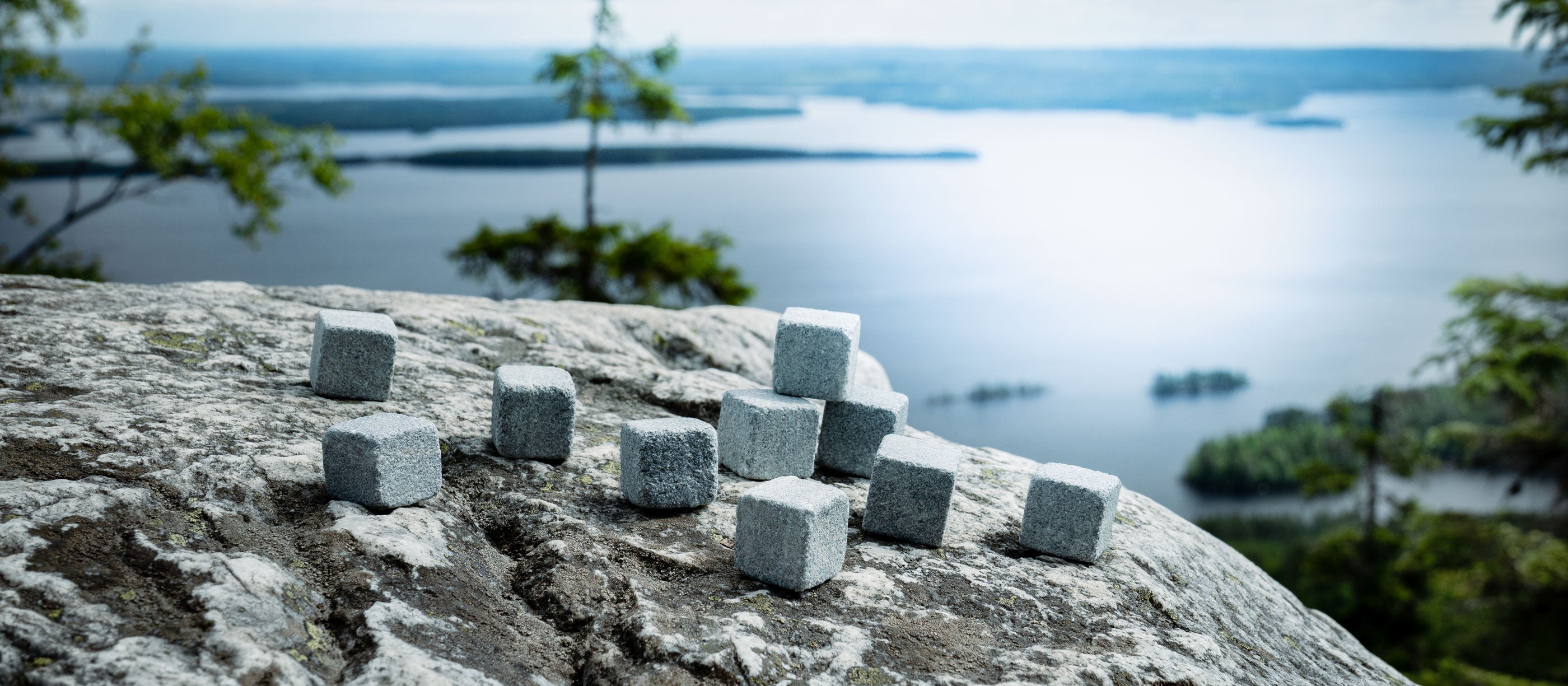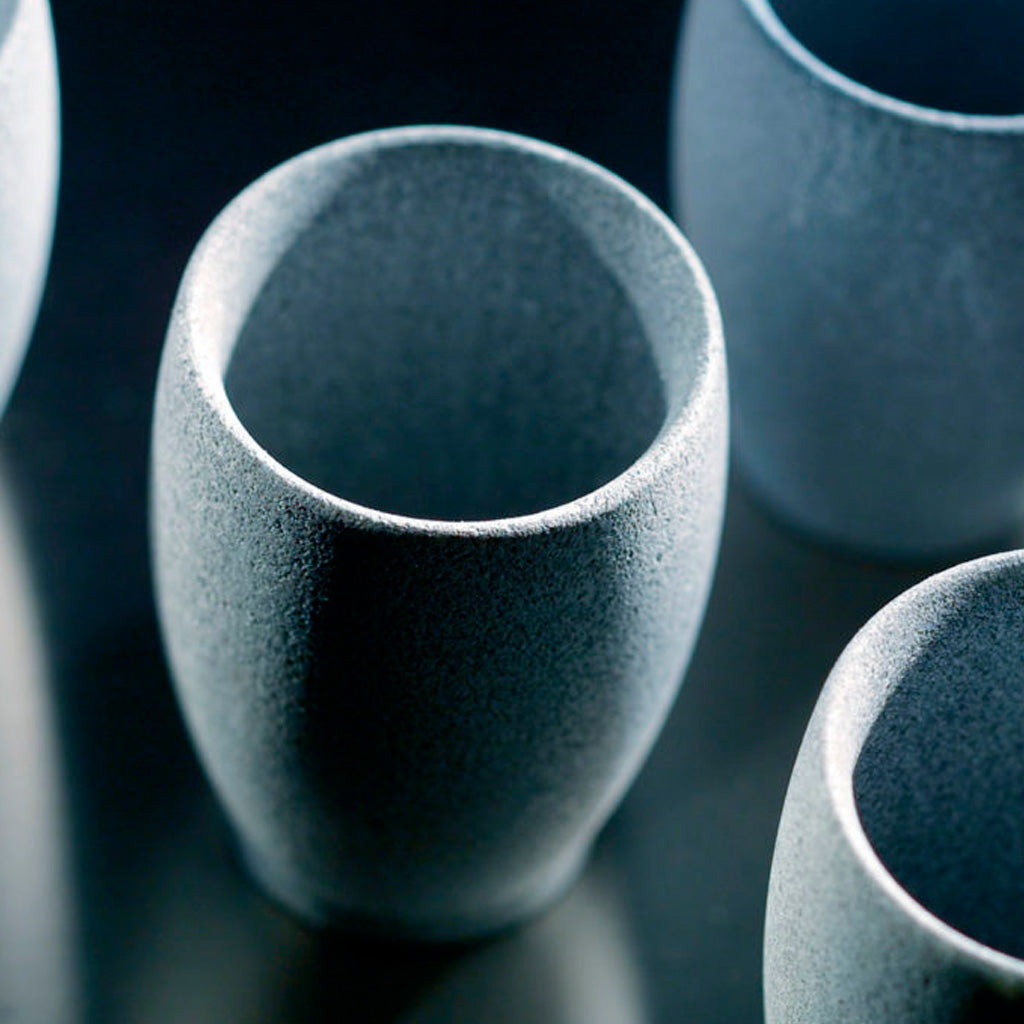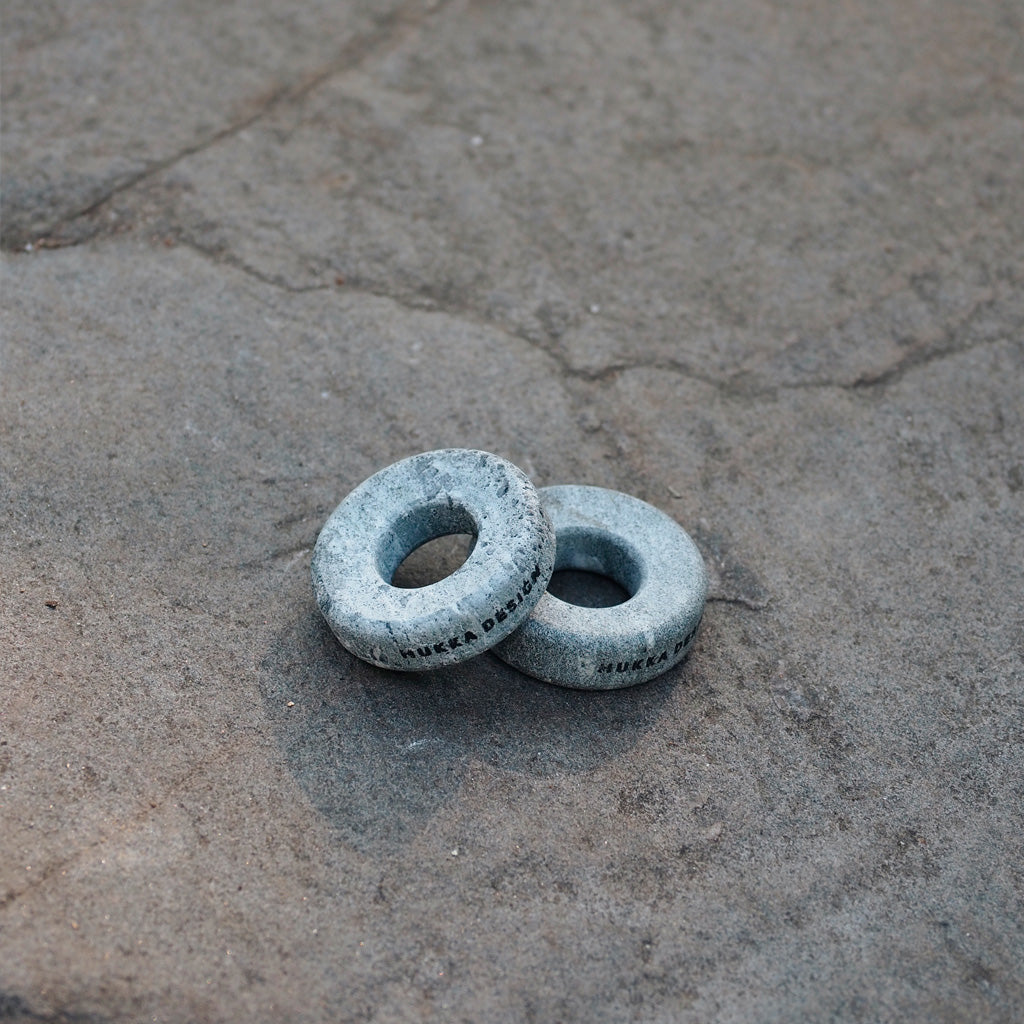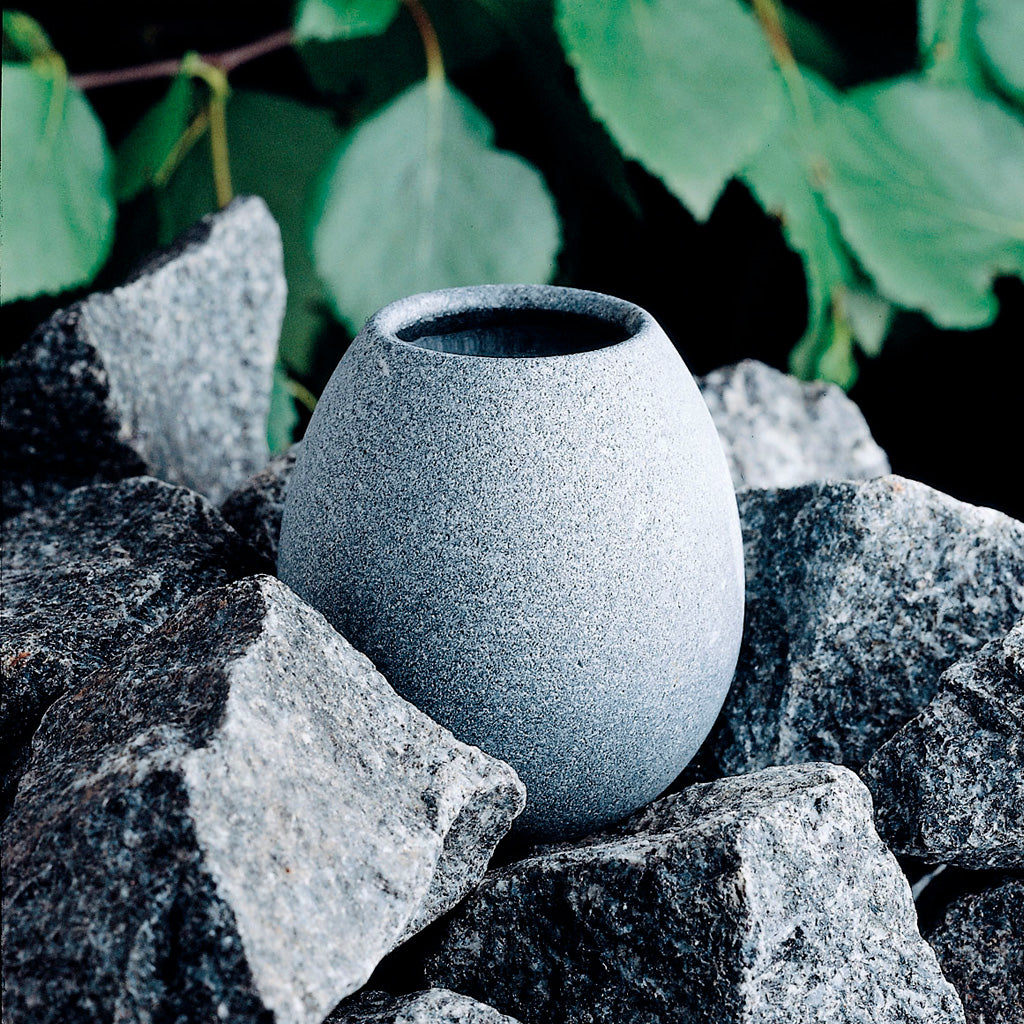
Soapstone from North Carelia
A glimpse of history
Over two billion years ago, the Earth was still in its infancy and the continental
plates were in motion, seeking their current positions. Even the Northern regions,
now so tranquil, were home to high levels of volcanic activity.
A major collision between the continental plates occurred in the area of what is
now Finland’s eastern border. The solid surface layer of the Earth’s crust buckled
in places, creating a mountain range over nine kilometres high. Underneath, “air
pockets” filled with a molten stone mass, which compressed into an extremely
dense material. Thus soapstone obtained its unique heat and cold storage
characteristics

As the solid surface of the Earth moved and the tectonic plates collided, a high mountain range was formed, which is now located on the border of Finland and Russia. As the mountains rose, huge pockets of air were created under them. Liquid rock from the volcano filled these pockets. The extremely high temperature and pressure level formed a special stone, the Karelian soapstone material. It rested under the mountains for millions of years, until another kind of natural force took place in the northern hemisphere: the Ice Age. Massive continental glaciers passed over the area, and the pressure was so great that it smoothed out the Karelian Mountains, which had hidden the most interesting gift of Mother Nature: the Karelian soapstone.
The stone material had to wait a long time before anyone understood to start making various objects from it. Tens of thousands of years, accompanied by the nightless sun of summer and the beautiful northern lights of winter, the stone acquired even more special characteristics.

Mother Nature gave Karelian soapstone mythological properties to withstand the harsh northern environment. It can withstand hot fire as well as the cold of frost. It is able to accumulate both heat and cold. And it stays warm or cold for a long time. This is one of the unique features of Hukka products. Karelian soapstone material is relatively soft, so it can be worked into various shapes by experienced craftsmen. Although it is soft, the stone is a very dense and heavy material. For example, it does not absorb liquids or flavors. The soapstone material has been tested and approved for use in the preparation or preservation of food products. It is an extremely durable type of rock that can withstand the challenges of a modern environment well. A 2.8 billion year "manufacturing process" has prepared it for most of the challenges it may face.

Karelian soapstone material is made up of soft and semi-soft minerals:
Talc 40-50%
Magnetite 40-50%
Pennitti 5-8%
Talc makes Karelian soapstone soft and relatively easy to work with. The high magnetite content makes it durable. The density of soapstone material is 2980 kg/m³. The melting point is 1640 degrees Celsius. Thermal conductivity 6.4 W / (mK). Karelian soapstone material is a chemically very durable material, which is why it was used to make laboratory counters, among other things. It also complies with Finnish food regulations, so it can be used directly with food.
